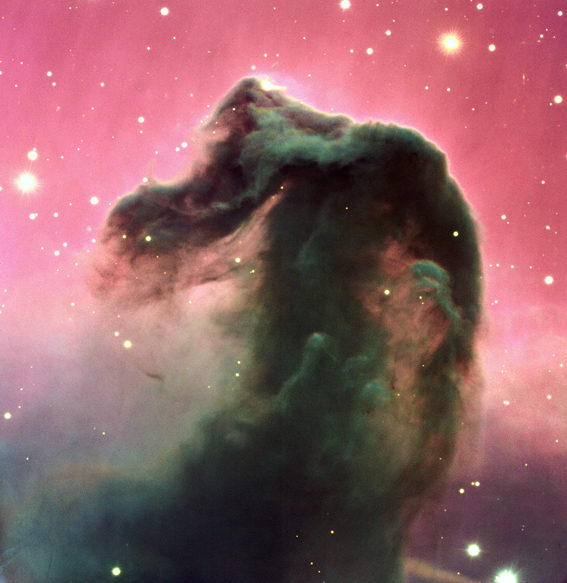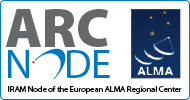News
The discovery of a new interstellar molecule confirms the existence of a petroleum refinery in our galaxy
An international team of scientists has just detected a new interstellar molecule in our galaxy. This molecule, called the propynylidyne ion (C3H+), is part of the hydrocarbon family, which composes one of the major energy sources on Earth, petroleum and natural gas. The discovery of this molecule at the heart of the famous Horsehead Nebula in the Constellation of Orion confirms that this nebula is an active petroleum refinery for the interstellar medium. Thanks to a recent upgrade of the instruments at the IRAM 30m radiotelescope located near Granada in Spain, the team of scientists was able to detect the propynylidyne ion in space for the first time as part of a systematic survey of the chemical content of the Horsehead Nebula.
 |
| The Horsehead nebula (credit: ESO) |
Located in the Orion constellation, 1300 light-years from Earth, the Horsehead Nebula is not just one of the most famous and easily-recognizable shapes in the sky. Its light-bathed silhouette is above all for astronomers a fantastic interstellar chemical laboratory, where high density gas and stellar light interact.
Using the IRAM 30m radiotelescope near Granada in Spain, Jérôme Pety and his team undertook a systematic survey of the chemical content of the Horsehead's mane, during a project named Horsehead WHISPER. « The recent upgrade of the telescope instruments allowed us to observe in one week what would have required one year before. This opens new possibilities to classify the different kinds of gas in the universe, based on the molecules they contain », said Pierre Gratier, a team member.
The survey enabled the detection of about 30 molecules, which confirms the chemical complexity at play in the famous nebula. Among these molecules, there are many small hydrocarbons, the smallest molecules that compose petroleum and natural gas. « The nebula contains 200 times more of these hydrocarbons than the total amount of water on Earth!' », said Viviana
Guzman, a Chilean astronomer. One of these small hydrocarbons, the propynylidyne ion (C3H+), was observed for the first time in space as part of this work. This ion is a key player in the chemical reactions which link the small hydrocarbons together.
But how do these hydrocarbons form? In their article, Jérôme Pety and his team propose that they result from the fragmentation of giant carbonaceous molecules named PAHs. These giant molecules could be eroded by ultra-violet light, giving a large amount of small hydrocarbons. This mechanism would be particularly efficient in regions like the Horsehead Nebula where the interstellar gas is directly exposed to the light of a nearby massive star. « We observe the operation of a natural refinery of petroleum of gigantic size », concludes Jérôme Pety.
Notes
The science team: J. Pety (IRAM, LERMA/Observatoire de Paris, CNRS, Université de Cergy-Pontoise, Université Pierre et Marie Curie, ENS), P. Gratier, V.Guzman, S.Bardeau (IRAM, Grenoble, France), A.Sievers (IRAM, Granada, Spain), M. Gerin (LERMA/Observatoire de Paris, CNRS, Université de Cergy- Pontoise, Université Pierre et Marie Curie, ENS), E. Roueff (LUTH/Observatoire de Paris, CNRS, Université Paris Diderot), F. Le Petit (LUTH/Observatoire de Paris, CNRS, Université Paris Diderot), J. Le Bourlot (LUTH/Observatoire de Paris, CNRS, Université Paris Diderot), J. Goicoechea (CSIC/INTA, Madrid, Spain), A. Belloche (MPIfR, Bonn, Germany), D. Talbi (LUPM, Montpellier, France).
The original article:
The IRAM-30m line survey of the Horsehead PDR: First detection of the l-C3H+ hydrocarbon cation.
Contact:
Jérôme Pety
Institut de Radioastronomie Millimétrique
Tel : 04 76 82 49 87
Email : pety@iram.fr



